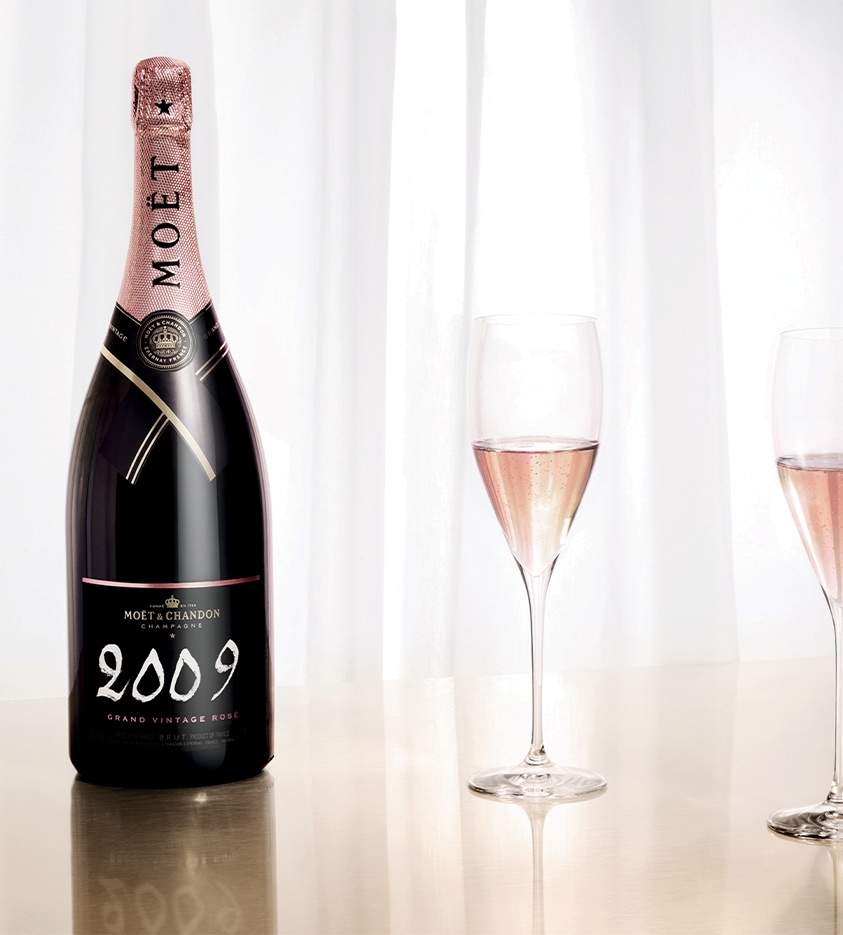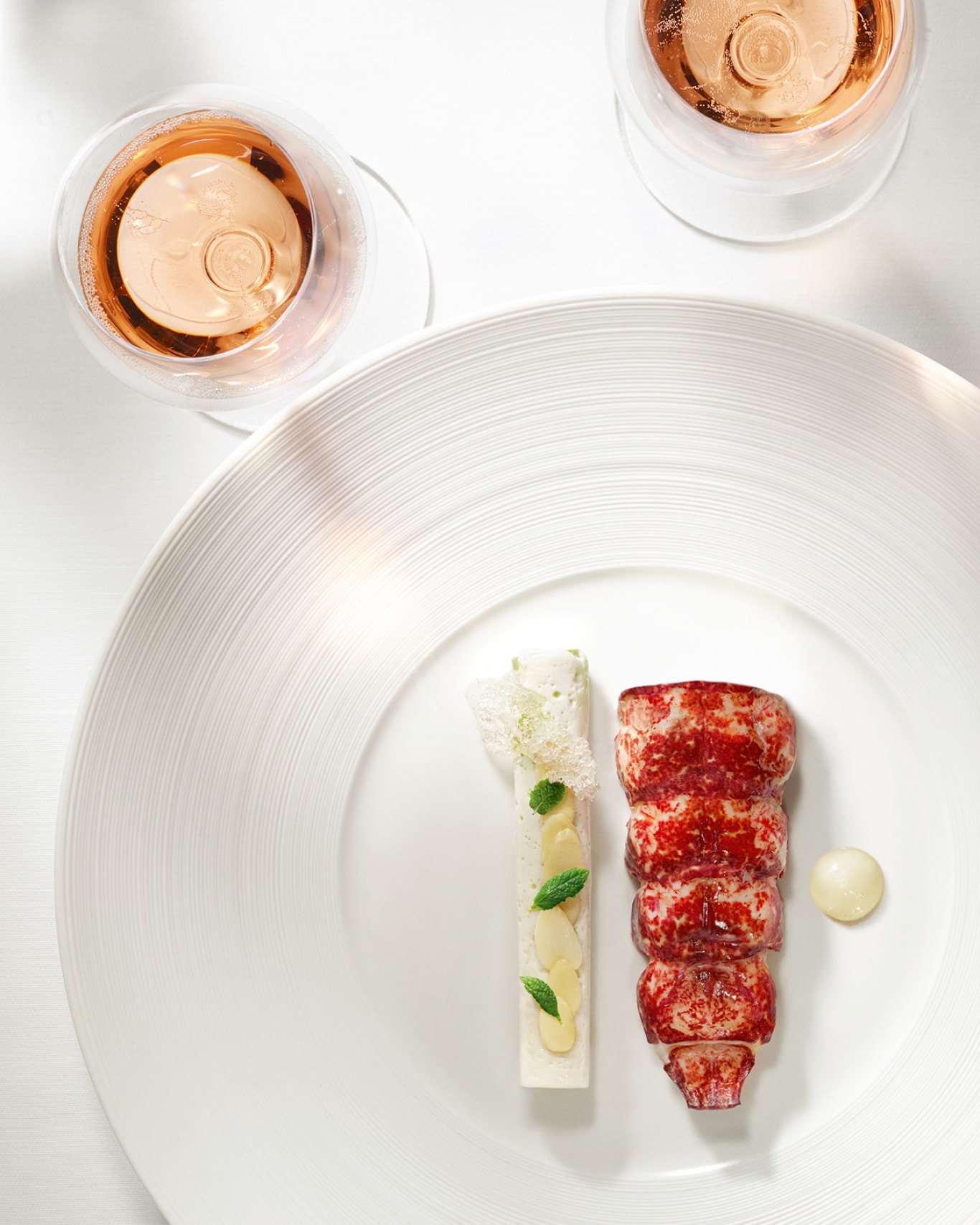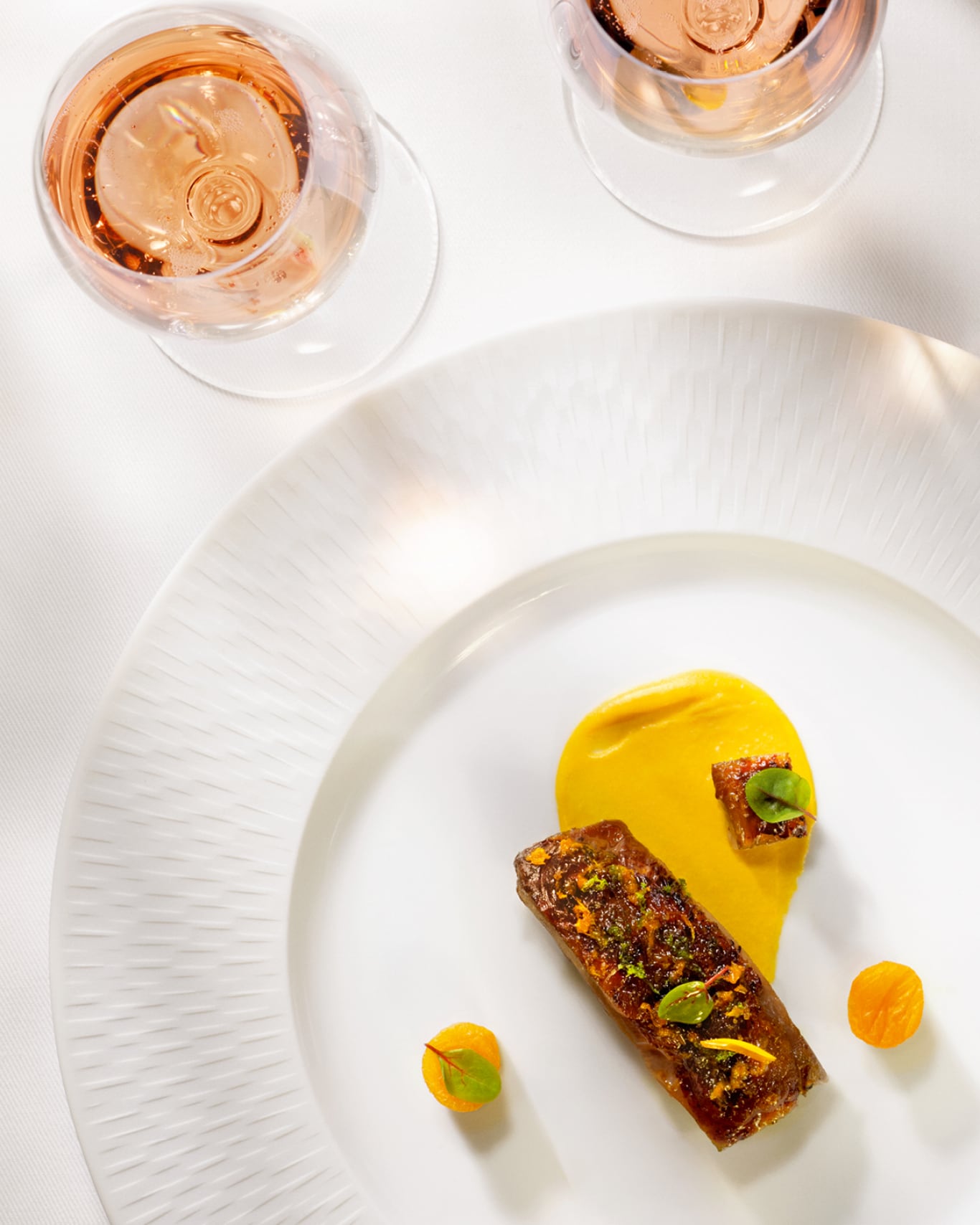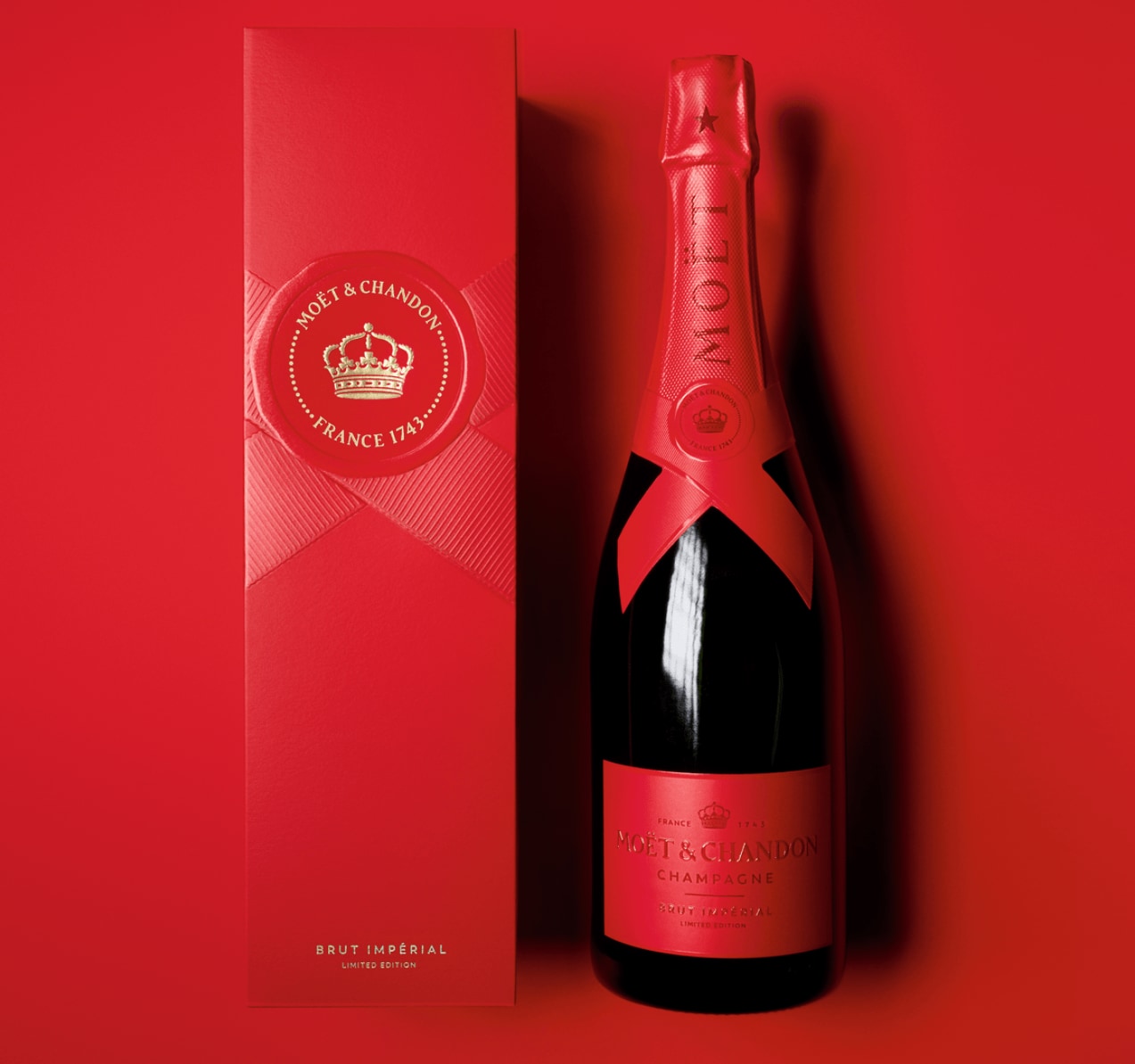Grand vintage Rosé 2009
Grand vintage Rosé 2009
tasting notes
COMPOSITION
The succulent Pinot Noir from the 2009 harvest appears in all its glory in this Moët Grand Vintage Rosé champagne. Full of sun and aromas, it accounts for 59% of the blend, including 19% of red wines. Chardonnay brings elegant freshness and smoothness (30%), while Meunier enhances this great vintage with its full-bodied texture (11%).
A BRIGHT COLOUR
Deep pink with coral glints, beautifully bright, and with fine and persistent bubbles.
A FULL, GOURMAND NOSE
The first notes evoke the harvesting of red berries warmed by the summer sun: wild berries, wild strawberries, raspberries, redcurrants. These fruity aromas are tinged with floral and vegetable notes such as rhubarb, violet and poppy-flavoured candy. A hint of vanilla and pink pepper underscores the full maturity of this champagne.
A LIGHT YET INTENSE PALACE
The palate evokes a candy store and its aromas of marshmallows, hard candy, cotton candy, candy apples. As it evolves, notes of nutmeg, dried fig and black cherry appear. Pinot Noir expresses itself here with airy elegance, through an enveloping texture and a finish featuring warm spices.
DOSAGE
5 g/liter
CELLARING TIME
7 years
AGING AFTER DISGORGEMENT
At least 6 months
CHROMATICITY
While tasting Grand Vintage 2009 Rosé champagne, the brilliant pink of a candy store display, the tender pink of cotton candy, the shimmering and deep pink of mother-of-pearl powders all play key roles. But also: white, delicately tinted with a rosebud, the golden yellow of curry or turmeric powder, the intense wine lees colour of red basil.
TEXTURES
The style of this champagne combines both the lightness and the volume of a cloud. The mid-palate has a gourmand, silky texture, which pairs perfectly with mousseline, stewed, buttered dishes... Its complex and refined effervescence are ideal for serving with the emulsion of a salted sabayon dish.
do
When pairing this gourmand, yet light champagne, it’s not about sweet and savory or sweet and sour, but a hint of sweetness in a savory dish, a tangy note inside that sweetness.
Explore the variety of tangy fruits (physalis, redcurrant, passion fruit, rhubarb).
Dare to cajole, serving a duck fillet with a slice of roasted watermelon.
For citrus fruit, try contrasting its acidity (using an ingredient that tempers it).
For fruit, inject a dash of acidity into a juicy, fleshy and gourmand element.
don't
-
Materially and chromatically cold for a taste of the sea (like that of oysters).
-
The overly tart and pronounced acidity of raw citrus fruit (lime, lemon).
-
The powerful bitterness of burnt spices.
-
Bisques or sauces that are too full-bodied, too concentrated.
Ingredients matrix


pourquoi ?
Jutosité délicate et élégante
Œufs de poisson (pour le craquant
et la salinité iodée)

Quel ingrédient ?
(daurade, bar, turbot, St. Pierre, Sole)
Œufs de poisson

Comment ?
Cru
(daurade, bar, turbot, St. Pierre, Sole)
Œufs de poisson
Cuit
Poché et servis avec une mayonnaise
vis avec une mayonnaise


Ingredients matrix
Grand vintage Rosé 2009

Ingredients matrix
Grand vintage Rosé 2009
Poisson
Pourquoi ?
Mâche non excessive
Jutosité délicate et élégante
Œufs
de poisson (pour le craquant et la salinité iodée)
QUEL INGRédient ?
Poissons à chair blanche
(daurade, bar, turbot, St.
Pierre, Sole) Œufs de poisson
Comment ?
Cru :
Sushi, sashimi, carpaccio
Mariné “à la
tahitienne” (Citron vert, gingembre, lait de coco)
Ceviche
sans excès de vinaigre
ou de soja
Cuit :
Rôti
sans excès de coloration
Poché et servis avec une
mayonnaise vis avec une mayonnaise
COquillages
Pourquoi ?
Mâche non excessive
Jutosité délicate et élégante
Œufs
de poisson (pour le craquant et la salinité iodée)
QUEL INGRédient ?
Poissons à chair blanche
(daurade, bar, turbot, St.
Pierre, Sole) Œufs de poisson
Comment ?
Cru :
Sushi, sashimi, carpaccio
Mariné “à la
tahitienne” (Citron vert, gingembre, lait de coco)
Ceviche
sans excès de vinaigre
ou de soja
Cuit :
Rôti
sans excès de coloration
Poché et servis avec une
mayonnaise vis avec une mayonnaise
Crustacés
Pourquoi ?
Mâche non excessive
Jutosité délicate et élégante
Œufs
de poisson (pour le craquant et la salinité iodée)
QUEL INGRédient ?
Poissons à chair blanche
(daurade, bar, turbot, St.
Pierre, Sole) Œufs de poisson
Comment ?
Cru :
Sushi, sashimi, carpaccio
Mariné “à la
tahitienne” (Citron vert, gingembre, lait de coco)
Ceviche
sans excès de vinaigre
ou de soja
Cuit :
Rôti
sans excès de coloration
Poché et servis avec une
mayonnaise vis avec une mayonnaise
INSPIRATIONS
snacking
Etiam lobortis rutrum purus interdum finibus.
Ut vitae cursus est. Vestibulum vulputate ac libero ut scelerisque.
Nam rhoncus cursus enim, nec sollicitudin tortor porttitor ut.






